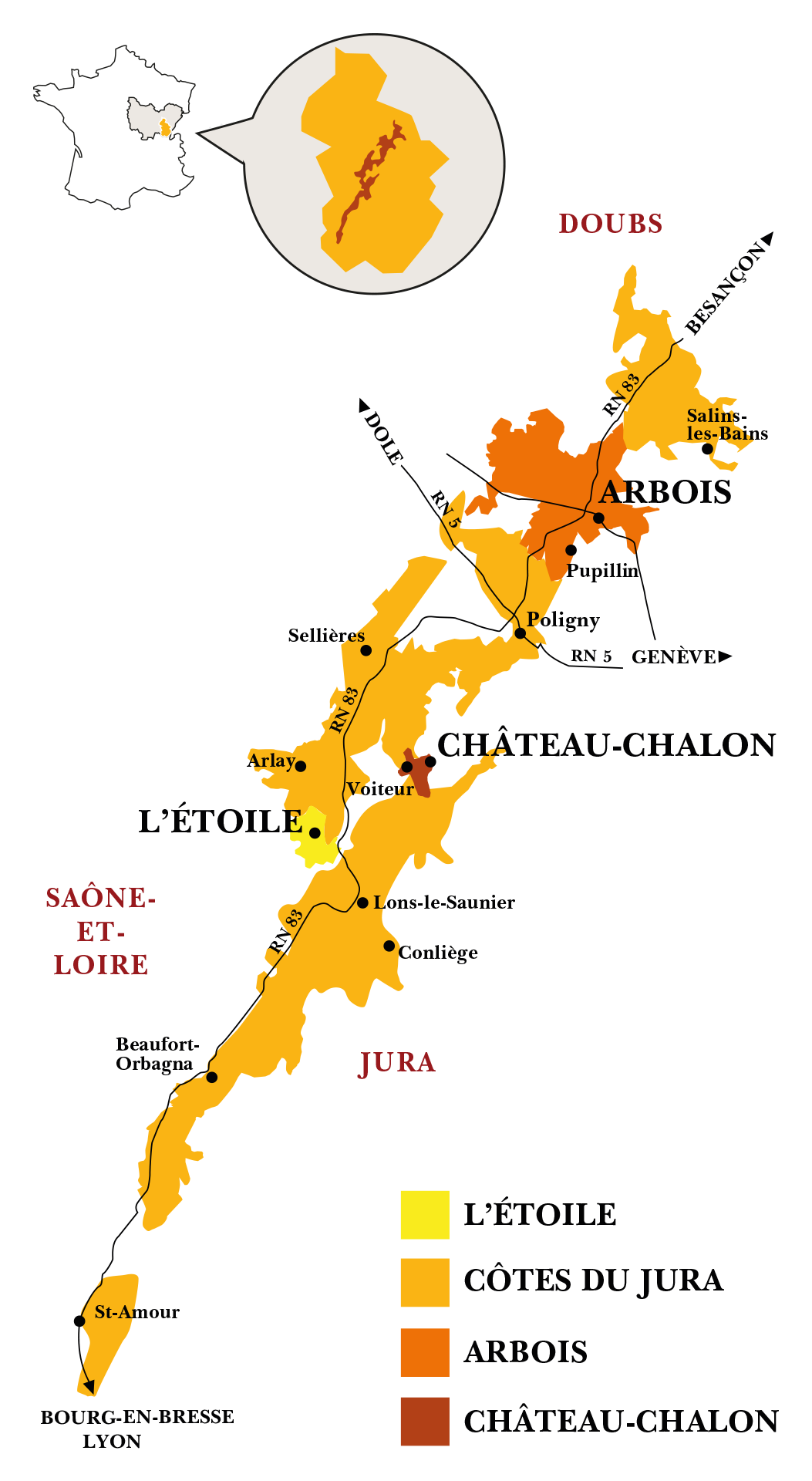CÔTES DU JURA SAVAGNIN 2022
NATURÉ
Grape Varieties
100% Savagnin “Naturé”.
Typical of the Jura region, the Savagnin is a demanding and patient grape, very often associated with oxidative ageing under a film of yeast known as the “voile”, or veil.
But its less well-known mineral facet has to be discovered! This cuvée is made from a "naturé" Savagnin, a term used when aging wines while protecting them from contact with air, by filling them up as the level drops due to natural evaporation.
Tasting notes
Far away from the oxidative wines with which the Savagnin grape variety is generally associated, this Côtes du Jura is a wine of great freshness, with lovely, airy white flowers notes.
The palate is as elegant as the nose, nicely blending richness, roundness and freshness and offering a great aromatic presence with a floral and iodized structure.
Food and wine paring
Taste with cold starters, crustaceans, smoked salmon, grilled fish or roasted poultry.
Serving suggestions
Serve slightly fresh between 12° and 14°C (53-57°F)
Ageing potential
Drink young, within 2-3 years after the harvest to fully appreciate its freshness and fruit.
Appellation
The Jura wine region is small in size but large in its remarkable diversity. It covers 80kilometres between Burgundy and Switzerland, in the eastern France.
Created in 1937, the AOC (designation of origin) of Cotes du Jura is omnipresent in the north and south of the vineyard, on varied and contrasting terroirs. It is the second leading AOC in Jura in terms of production, and it engages all five of the Jura's grape varieties.
The whole range of wines of the Jura is represented, although the whites dominate - still or sparkling - with wines that are round, fruity, and generous.
Winemaking
Reception of the grapes, vatting by gravity into a thermo-regulated tank for the fermentation. They are pressed, and musts are settling under control temperature. Then the fermentation starts, maintained at low temperature (20- 22°C).
Ageing in stainless steel tanks, on fine lees and for 2 -3 months to aid the preservation of the wine's minerality, purity of fruit and crisp acidity.
Vintage : 2022
Having endured the nights at the beginning of April, we were spared from the effects of the frost. A budburst on 13 April and flowering on 23 May promised an early harvest. June saw more than 150 mm of rainfall, allowing the marl soils to build up some healthy reserves to cope with the hot summer weather.
The harvest was running from 16 August to 15 September. The grapes destined for the Crémant du Jura opened the show on 16 August, being the earliest date on record at the estate. This decision paid off as the balance of acidity was in line with what we were looking for. For our other Jura appellations, a generous rainfall on the weekend of 20 August allowed the vines to finish ripening in the best conditions.
The excellent health of the grapes allowed us to prolong the harvest until mid-September, with the opportunity to boost the maturity of the reds to their best polyphenolic potential, particularly for the Pinot Noir grapes, creating powerful, full-bodied wines. The white Chardonnays and Savagnins express floral aromas with a perfectly balanced mineral structure.






